Gienah, also designated as Gamma Corvi, is a binary star located in the southern constellation of Corvus, the celestial raven. It is the brightest star in its constellation and
Key Facts & Summary
- The Gamma Corvi star system is composed out of two stars designated as Gamma Corvi A and Gamma Corvi B. The name Gienah, is the primary star’s traditional name.
- The star system is located at around 154 light-years / 47.1 parsecs away from the Sun.
- The Gamma Corvi star system has an apparent magnitude of 2.585 and an absolute magnitude of -0.79.
- The primary star, Gamma Corvi A, is a blue-white giant star of spectral type B8 III.
- The secondary star, Gamma Corvi B, is believed to be in the stellar classification range between K5 – M5 V.
- Gamma Corvi A is also a Mercury-manganese star. It displays anomalously higher than normal abundances of the elements mercury and manganese in its spectrum.
- Gamma Corvi A has an estimated mass of around 4.2 solar masses. Its radius is currently unestablished.
- The primary star is quite energetic, being around 331 times brighter than our sun.
- Gamma Corvi A is also a fast spinner, having a rotational velocity of around 30 km / 18.6 mi per second.
- The star’s age has been estimated to be at around 160 million years. It is much younger than our sun.
- Little is known about its companion, other than the fact that the secondary star, Gamma Corvi B has only 80% of the sun’s mass.
- The Gamma Corvi star system has a radial velocity of -4.2 km / -2.6 mi per second.
- In medieval times, the star was associated with the 15 Behenian Fixed Stars. These stars influenced the planets and were believed to have magical properties, often used in magic rituals.
Though it is the brightest star in its constellation, it is not designated as alpha. Not all stars are designated based on their brightness. The Gamma Corvi star’s traditional name is Gienah.

The traditional name is of Arabic origin and translates to “the right-wing of the crow” – It was named as such due to its position in the Corvus constellation, marking the raven or crow’s right-wing, though in modern charts it marks the left-wing.
Gamma Corvi / Gienah, was once part of the 15 Behenian Fixed Stars, during the medieval times. The Behenian stars were used in magic rituals, they were associated with elements or even planets or plants and it was believed that they could influence them in a magic sense.
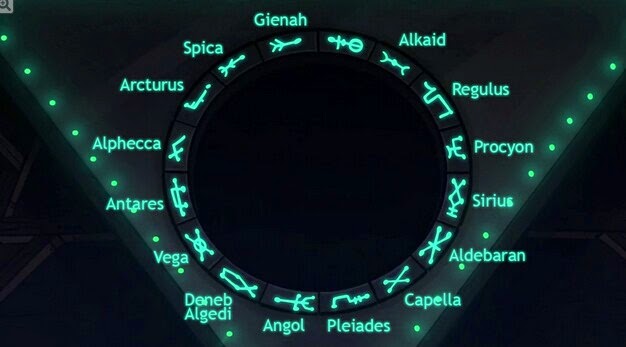
Gienah was associated with the planets Saturn and Mars, and it was believed to be connected with the gemstone onyx and the burdock plant.
Formation
Gamma Corvi’s age is difficult to estimate. It was calculated at being on average, at around 160 million years old. Some other estimates to put the star’s age at 130 million years old or 200 million years. Regardless, the star is much younger than our sun.
Gamma Corvi’s exact origin is unknown but it likely formed from a molecular cloud of dust and gas. Gravity pulled the swirling dust and gas together and resulted in the brightest star that we now call Gamma Corvi or Gienah.
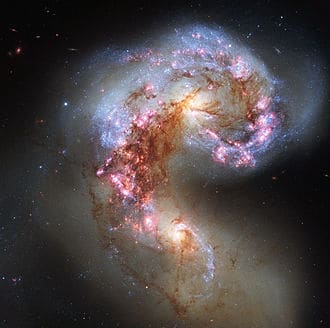
Distance, Size, and Mass
The Gamma Corvi star system is located at around 154 light-years / 47.1 parsecs away from the Sun. The star is “fairly” close to us and it is bright enough to be seen with the naked eye.
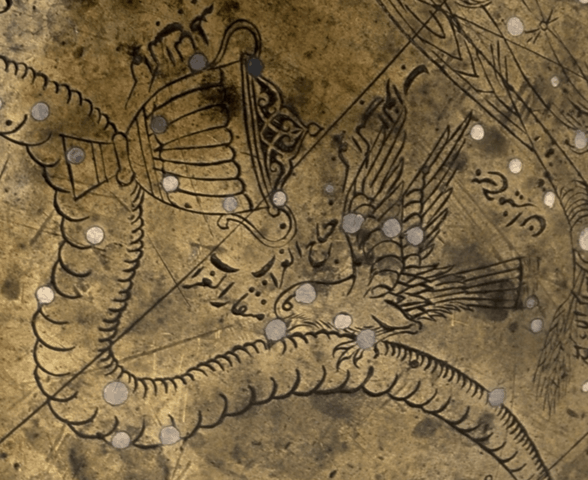
The primary star, Gamma Corvi A, is much bigger than our sun. It has an estimated mass of around 4.2 solar masses or 420% of the sun’s mass. Its radius hasn’t been established but it is clearly several times bigger than our sun.
The secondary star, Gamma Corvi B, is even more obscure. Much of its physical properties haven’t been determined. What is known is that it is less massive than our sun, having around 0.8 solar masses or 80% of the sun’s mass. It is quite likely that the secondary star is actually smaller than our sun.
Other Characteristics
The primary star, Gamma Corvi A, is, is a blue-white giant star of spectral type B8 III. It is a chemically peculiar star since it has anomalously higher than normal abundances of the elements mercury and manganese in its spectrum. Because of this, the star has been labeled as a Mercury-manganese star.
The primary star has also displayed other elements that show large over or under abundances. This peculiarity in an otherwise stable stellar atmosphere is most likely caused by the separation of the elements through diffusion and gravitational settling.
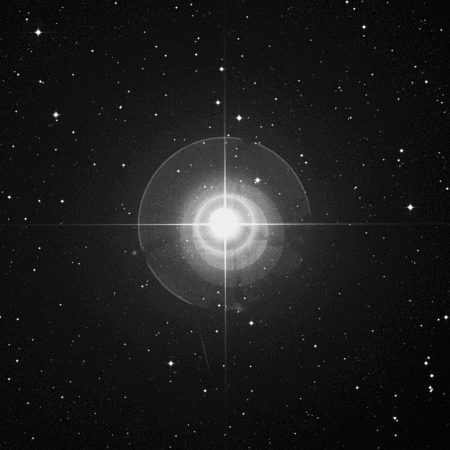
Gamma Corvi A is also quite an energetic star, being around 331 times brighter than our sun. The star is also a fast spinner, having a rotational velocity of around 30 km / 18.6 mi per second. Its surface temperatures are currently unknown.
Little is known about the secondary star, Gamma Corvi B. It is believed to be, however, in the stellar classification range between K5 – M5 V based on its photometry. Thus this star would either be an orange or red dwarf star.
Stellar System
Little is known about the Gamma Corvi star system. Based on some calculations, it is believed that the stars are orbiting one another at an average separation of 50 AU over a 158-year period. The stars system itself has an apparent magnitude of 2.585 and an absolute magnitude of -0.79.

Location
Gamma Corvi is located in the constellation of Corvus, the celestial raven. It is the brightest star in the constellation marking the left-wing of the celestial raven in Bayer’s Uranometria, and the right-wing in modern charts.
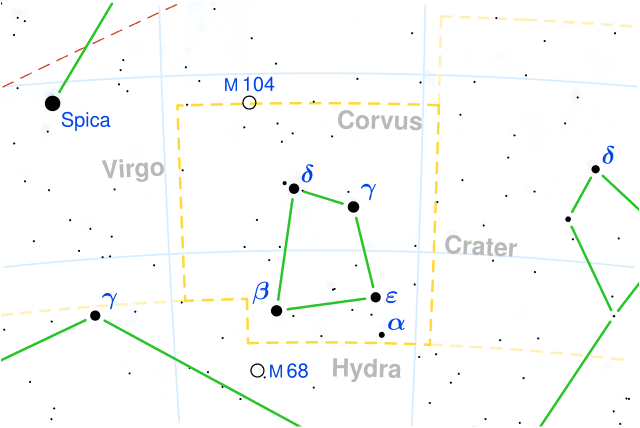
Both Gamma Corvi and Delta are pointer stars. They serve as pointers towards the famous Spica star. The constellation of Corvus is one of the 48 constellations recorded by the Greco-Roman astronomer Ptolemy, in his 2nd-century Almagest, though it was known for longer than that.
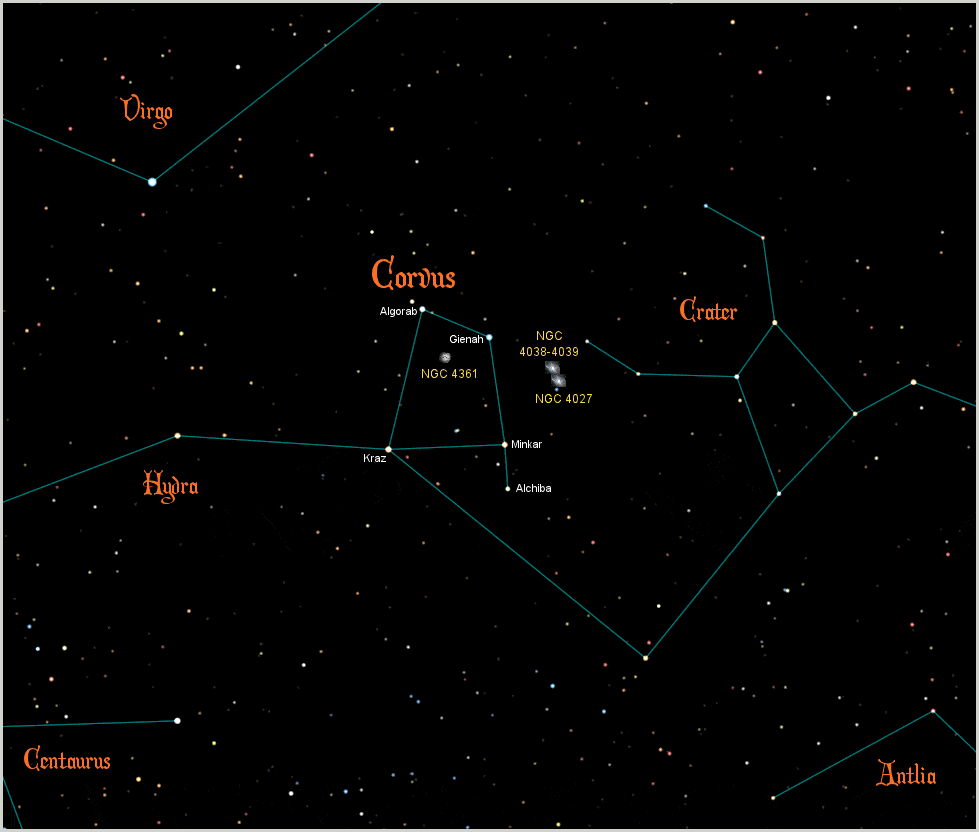
The Future
Gamma Corvi / Gienah is an aged giant star that has largely consumed its core hydrogen and has begun to expand and cool as it moves away from the main-sequence. The giant star will increase its current size several times over the next millions of years.
Did you know?
- The four brightest stars in the constellation of Corvus, Gamma, Delta, Epsilon, and Beta Corvi form a distinctive quadrilateral in the night sky.
- The Constellation of Corvus doesn’t have any Messier objects, but it does have many interesting stars and deep-sky objects such as galaxies, nebulae, and supernova remnants.
- The Corvus constellation was known since ancient times. One of the oldest records dates back to 1100 BCE, in the Babylonian star catalogs. It was also called the raven – MUL.UGA.MUSHEN – and it was considered sacred to Adad, the god of rain and storm.
- The Chinese knew Gamma Corvi as the First Star of Chariot – an asterism consisting of Gamma, Epsilon, Delta, and Beta Corvi stars.
- In Indian astronomy, the Gamma Corvi along with the other main stars of Corvus, represented a hand or fist corresponding to Hasta, the 13th nakshatra or lunar mansion.
Sources:
Image source:
- https://sites.google.com/site/gienahstar/_/rsrc/1467126858997/home/image.jpg?height=320&width=320
- https://cayelincastell.com/wp-content/uploads/2017/10/behenian-star-glyphs.jpg
- https://upload.wikimedia.org/wikipedia/commons/thumb/3/30/Antennae_Galaxies_reloaded.jpg/330px-Antennae_Galaxies_reloaded.jpg
- https://upload.wikimedia.org/wikipedia/en/thumb/6/61/43-Corvus-Constellation.PNG/588px-43-Corvus-Constellation.PNG
- https://in-the-sky.org/image.php?style=medium&userimg=19910715_115934_0864fb3684b7.png
- https://i.ytimg.com/vi/lnlZMtmfijs/hqdefault.jpg
- https://upload.wikimedia.org/wikipedia/commons/thumb/8/8e/Corvus_constellation_map.svg/640px-Corvus_constellation_map.svg.png
- https://www.peoplesguidetothecosmos.com/constellations/corvus.gif
